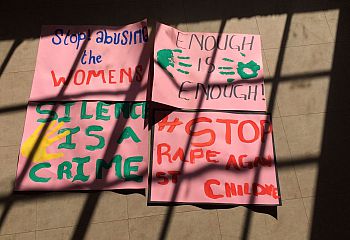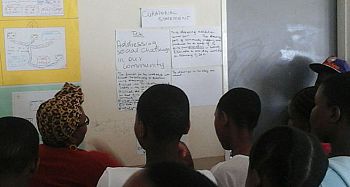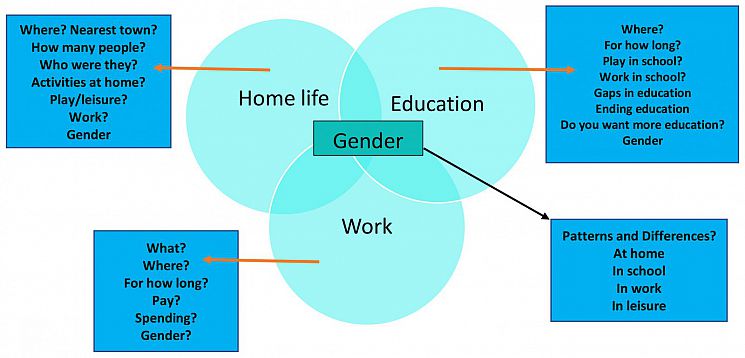The research methodology
This research will use Participatory Visual Methodologies and individual Life History interviews.
 Participatory Visual Methodologies (PVM) are both a mode of inquiry and a strategy for transformation.
Participatory Visual Methodologies (PVM) are both a mode of inquiry and a strategy for transformation.
It has been used with marginalized youth on potentially sensitive topics which are difficult to research through more traditional methods. To add to this, PVM can be great fun and enjoyable, which is important for working with young people (Mitchell, 2011; Mitchell et al, 2017).
PVM involves participants in producing visual artefacts such as drawings, maps, photos, or cellphilms, either individually or in small groups. These artefacts are then shared and discussed in workshops involving a larger group of participants.
 These discussions are a crucial step in the PVM process. They help participants develop a collective sense of what the issues are and how they might be addressed, as well as generating rich data. Their collective discussions also constitute a first stage of data analysis.
These discussions are a crucial step in the PVM process. They help participants develop a collective sense of what the issues are and how they might be addressed, as well as generating rich data. Their collective discussions also constitute a first stage of data analysis.
Life History Interviews will be used to explore how participants have navigated the demands of family life, education and other forms of work. These intersections can be visualised in the following way, placing gender at the centre of these intersections.
